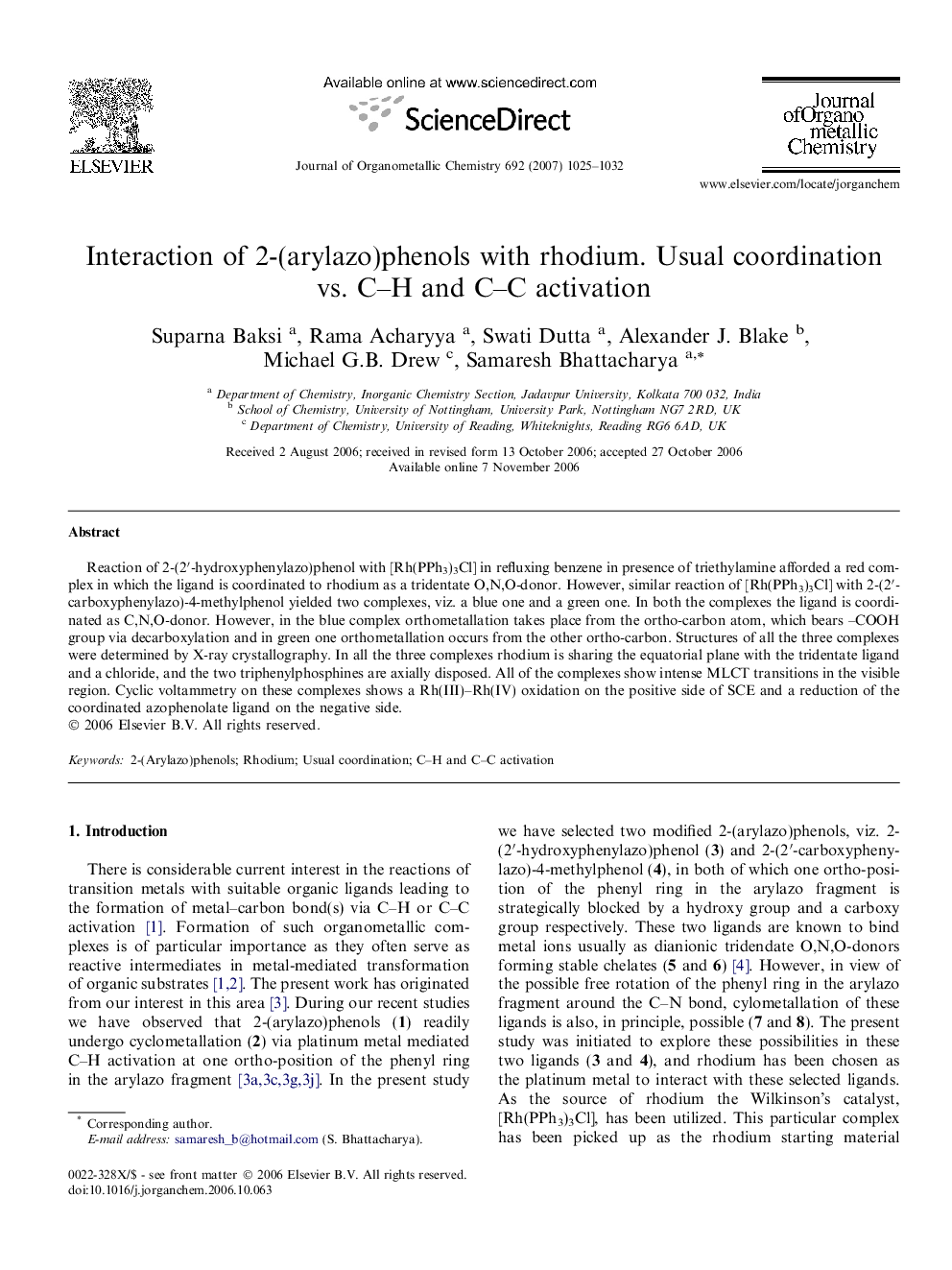| Article ID | Journal | Published Year | Pages | File Type |
|---|---|---|---|---|
| 1323472 | Journal of Organometallic Chemistry | 2007 | 8 Pages |
Reaction of 2-(2′-hydroxyphenylazo)phenol with [Rh(PPh3)3Cl] in refluxing benzene in presence of triethylamine afforded a red complex in which the ligand is coordinated to rhodium as a tridentate O,N,O-donor. However, similar reaction of [Rh(PPh3)3Cl] with 2-(2′-carboxyphenylazo)-4-methylphenol yielded two complexes, viz. a blue one and a green one. In both the complexes the ligand is coordinated as C,N,O-donor. However, in the blue complex orthometallation takes place from the ortho-carbon atom, which bears –COOH group via decarboxylation and in green one orthometallation occurs from the other ortho-carbon. Structures of all the three complexes were determined by X-ray crystallography. In all the three complexes rhodium is sharing the equatorial plane with the tridentate ligand and a chloride, and the two triphenylphosphines are axially disposed. All of the complexes show intense MLCT transitions in the visible region. Cyclic voltammetry on these complexes shows a Rh(III)–Rh(IV) oxidation on the positive side of SCE and a reduction of the coordinated azophenolate ligand on the negative side.
Graphical abstractReaction of [Rh(PPh3)3Cl] with 2-(2′-hydroxyphenylazo)phenol in refluxing benzene in the presence of triethylamine afforded complex 9 in which the ligand shows the usual O,N,O mode of coordination. Similar reaction with 2-(2′-carboxyphenylazo)-4-methylphenol yielded complexes 10 and 11, where the ligand underwent C–C and C–H activation, respectively.Figure optionsDownload full-size imageDownload as PowerPoint slide
